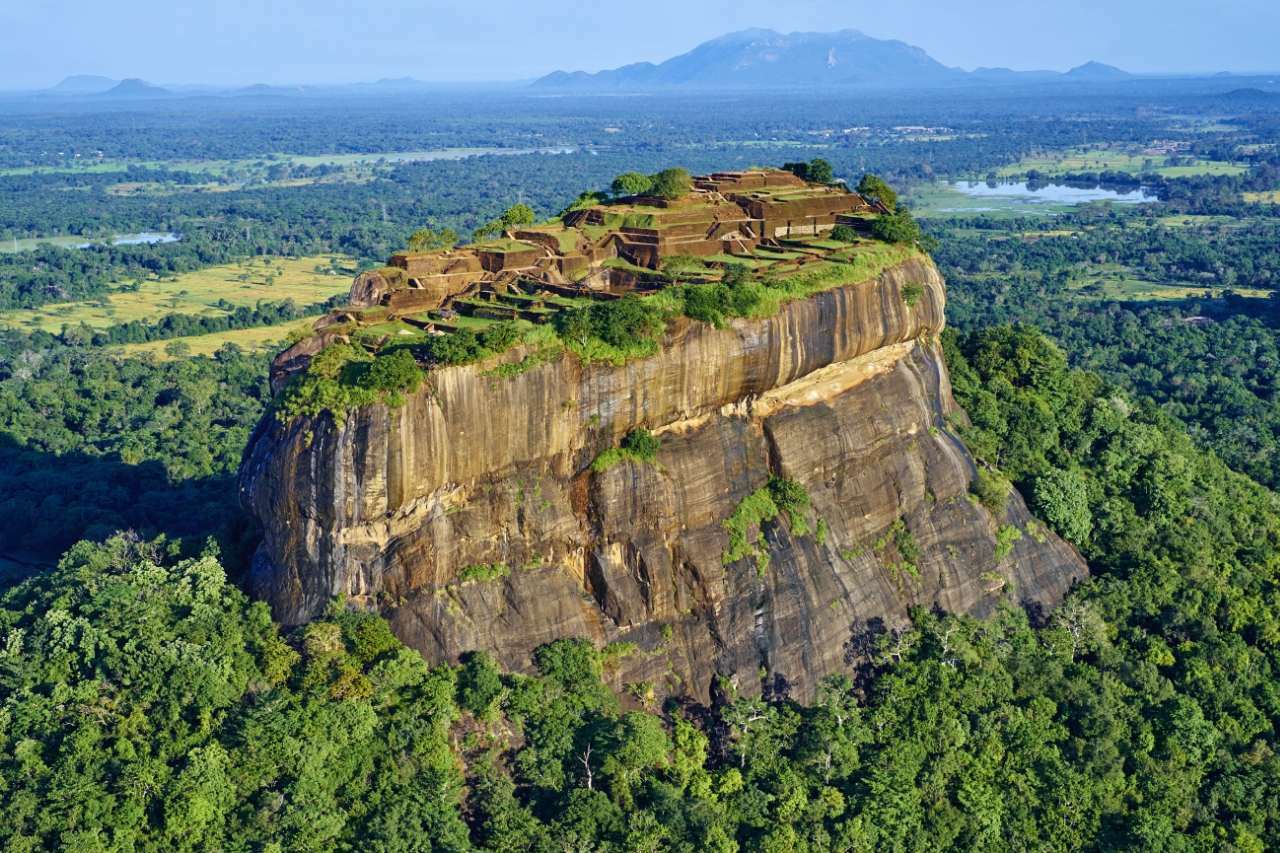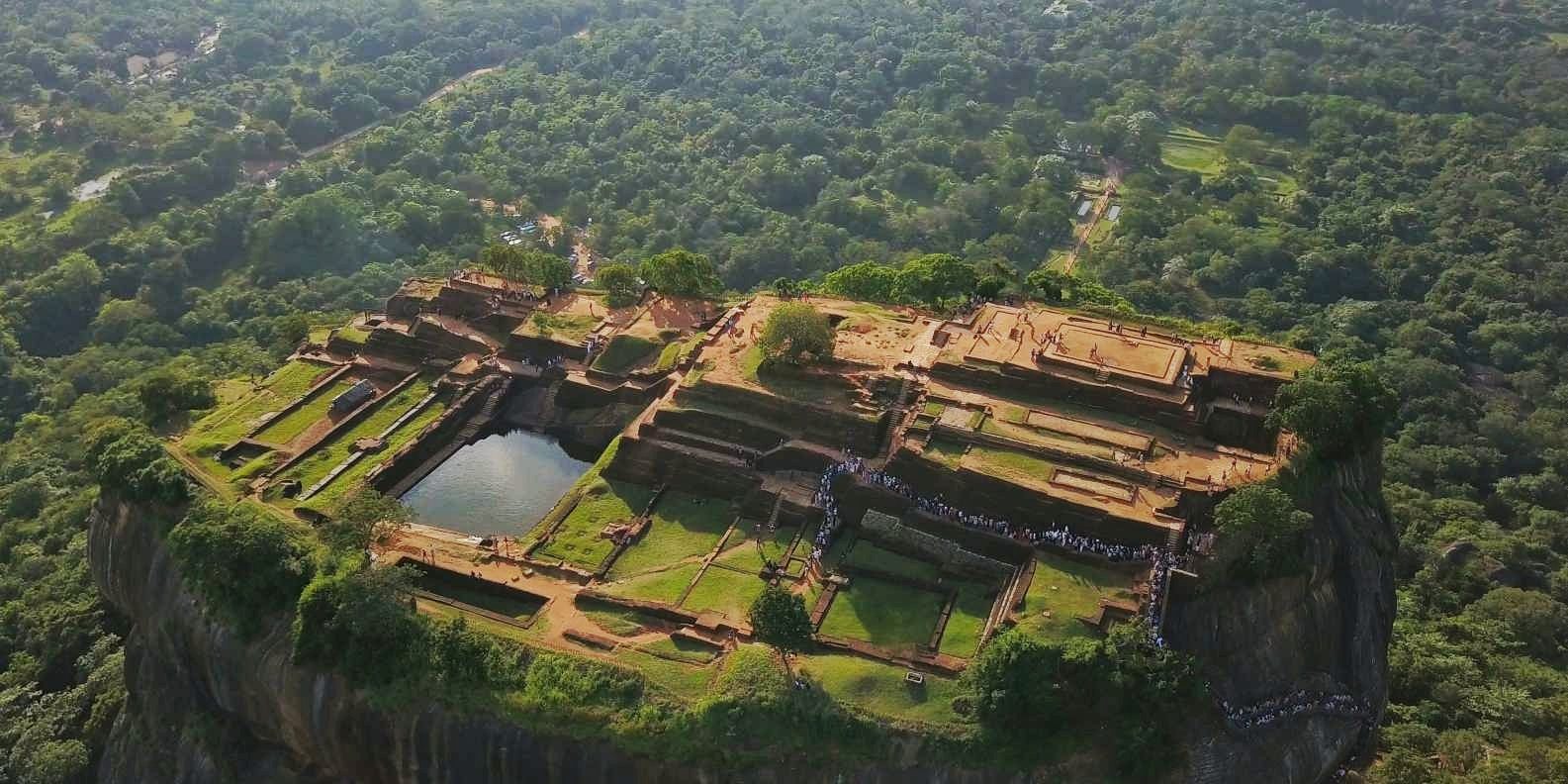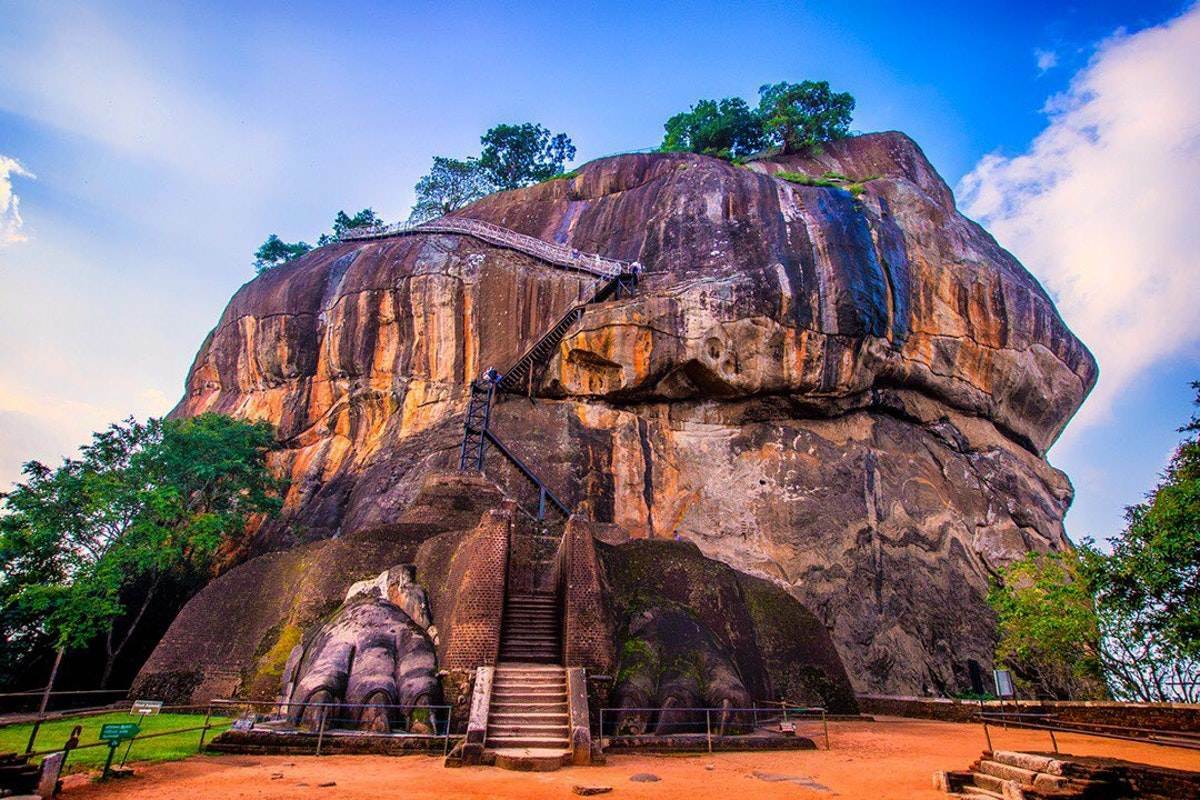In Sri Lanka, the iconic monolith known as “Lion Rock” is a remarkable sight, towering approximately 180 meters high.

David Childress (author of Technology of the Gods) recounts that, in 1831, a prominent British army figure encountered the ‘Lion Rock’ – a gigantic natural rock formation with a large staircase and a remarkable ancient palace atop it. The area is incredibly isolated and has a tremendous vertical rise.
According to Andrew Collins (author of ‘The Cygnus Mystery‘), Sigiriya is thought to have been a magnificent Buddhist temple, created in the early first millennium BC. In roughly 500 AD, it was transformed into a royal fortress, with gardens, buildings, megaliths, and caves all featuring prominently. The interiors of the caves also boast a variety of mural artwork.
Some academics think that the artwork depicting women may be representations of young ladies at the monarch’s court, while other scholars postulate that the figures are spiritual figures. Ancient astronaut believers even suggest that some of the depictions at the location could be proof of extraterrestrial contact in antiquity.
Giorgio Tsoukalos inquires about the possible meaning behind the ancient paintings of celestial beings that appear to be hovering in the sky. He questions, “What was the intent of our ancestors in depicting this image?”
Local stories and folklore tell of Sigiriya being created with assistance from deities from the heavens. This majestic and stunning structure was thought to be a representation of something that was seen but not understood, potentially being a misinterpretation of an extraterrestrial visit from beings with advanced technology.

Do the ancient paintings really point to the presence of extraterrestrial creatures, as suggested by ancient astronaut theorists? Is it possible that there is an alternate, more obscure cause for why the ancients chose to build an enormous city on top of this colossal structure?
Philip Coppens (author of The Ancient Alien Question) stated that often our ancestors venerated colossal and mysterious stones, perceiving them as gateways between the human world and the divine. His words provide further evidence of this phenomenon in Sigiriya.
According to Robert Schoch (author of ‘Forgotten Civilization’), the concept of a monolith (usually a massive solitary stone) and the idea of a grand mountain touching the sky can be very significant to people of the past and present. For many, this is an exceptionally reverent concept. Schoch believes this is representative of the heavenly world or the enigmatic ‘Mount Meru’.
Richard Leviton (writer of the ‘Encyclopedia of Earth Myths’), stated that Mount Meru – also known as just Meru – is a term used in Buddhist cultures to symbolize the cosmic mountain. It can be found at the center of the universe and is present on multiple levels, not in a physical way, but as an energized presence. It is a place where the gods dwell in the higher realms, each with their own homes and cities.

According to Andrew Collins, Mount Meru was thought to be the dwelling of the gods and the site of communication between mortals and divine beings. This place was seen as a gateway that connects the earthly realm and the divine one.
Philip Coppens also stated that Sigiriya was modeled after Mt. Meru, though obviously to a lesser degree. He noted that our ancestors had chosen the rock and built structures on the highest point of it.
Is it possible that Sigiriya was built to honour and unite with celestial beings, the extraterrestrials, as the ancient astronaut theorists theorize?



